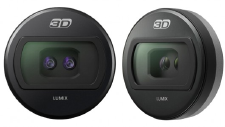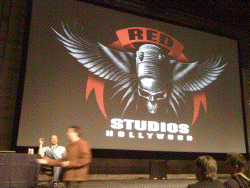[Editor: It seems a pity to cut any part of this brilliant lesson in art and technology by D.W. (David) Leitner (IMDB link). The except here is from the middle, but it is understatement to say that you should read the whole piece, beginning to end.
Proof in the Pudding where Red One is Concerned | Leitner’s Cinematography Corner | Millimeter
…
Or, as a counter example, view a 35mm print of Steven Soderbergh’s The Informant, also shot with a Red One.
Reviewing The Informant in the Washington Post on Sept. 18, staff writer Ann Hornaday writes that:
As with his last two projects, the “Che” films and “The Girlfriend Experience,” Soderbergh filmed “The Informant!” on the Red Camera, a digital system that is lightweight, nimble and particularly well-suited to filming without added lights. The result with “The Informant!” is a desaturated palette and spontaneous style that recall movies made in the 1970s. (In many of the scenes, the protagonists are backlit by blurry, unruly flares of light — shots that most directors would reject as unusable. But Soderbergh embraces what might be considered a technical flaw and makes it a design element.)
I mean no personal disrespect, but what a load of hooey. Not the part about the style of movies made in the ’70s (also questionable), but the part about being “particularly well-suited to filming without added lights.” On what does she base this remarkable insight? That Red One is more light-sensitive than either film or other digital cameras (wrong, wrong), or handles highlights or shadows in a superior manner (wrong)?
The roots of motion picture lighting can be traced back 100 years to the single-digit ASAs of early orthochromatic Kodak …
… Soderbergh told me he intends never to shoot film again…
… a total of three shots involved the use of additional lighting.
Soderbergh has made an artistic choice here, one having nothing to do with the particular creative possibilities inherent to a Red One. …
… you forget about technical choices.
But I knew by its grain-free, low-light look it was shot digitally. By comparison—and this came as total shock to my system—I didn’t realize Antichrist was shot digitally until the credits rolled.





